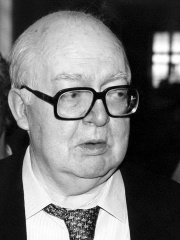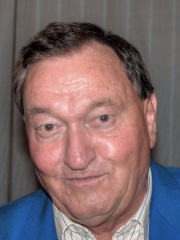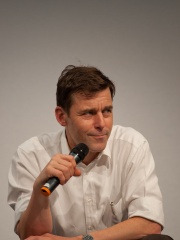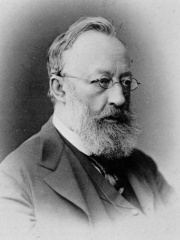







The Most Famous
WRITERS from Switzerland
This page contains a list of the greatest Swiss Writers. The pantheon dataset contains 7,302 Writers, 57 of which were born in Switzerland. This makes Switzerland the birth place of the 26th most number of Writers behind Romania, and Canada.
Top 10
The following people are considered by Pantheon to be the top 10 most legendary Swiss Writers of all time. This list of famous Swiss Writers is sorted by HPI (Historical Popularity Index), a metric that aggregates information on a biography's online popularity. Visit the rankings page to view the entire list of Swiss Writers.

1. Johanna Spyri (1827 - 1901)
With an HPI of 76.73, Johanna Spyri is the most famous Swiss Writer. Her biography has been translated into 61 different languages on wikipedia.
Johanna Spyri (Swiss Standard German: [joˈhana ˈʃpiːri]; née Heusser [ˈhɔʏsər]; 12 June 1827 – 7 July 1901) was a Swiss author of novels, notably children's stories. She wrote the popular book Heidi. Born in Hirzel, a rural area in the canton of Zürich, as a child she spent several summers near Chur in Graubünden, the setting she later would use in her novels.

2. Friedrich Dürrenmatt (1921 - 1990)
With an HPI of 75.09, Friedrich Dürrenmatt is the 2nd most famous Swiss Writer. His biography has been translated into 65 different languages.
Friedrich Dürrenmatt (German: [ˈfriːdrɪç ˈdʏrənˌmat] ; 5 January 1921 – 14 December 1990) was a Swiss author and dramatist. He was a proponent of epic theatre whose plays reflected the recent experiences of World War II. The politically active author's work included avant-garde dramas, philosophical crime novels, and macabre satire. Dürrenmatt was a member of the Gruppe Olten, a group of left-wing Swiss writers who convened regularly at a restaurant in the city of Olten.

3. Carl Spitteler (1845 - 1924)
With an HPI of 73.32, Carl Spitteler is the 3rd most famous Swiss Writer. His biography has been translated into 79 different languages.
Carl Friedrich Georg Spitteler (24 April 1845 – 29 December 1924) was a Swiss poet who was awarded the Nobel Prize for Literature in 1919 "in special appreciation of his epic Olympian Spring". His work includes both pessimistic and heroic poems.

4. Erich von Däniken (b. 1935)
With an HPI of 73.20, Erich von Däniken is the 4th most famous Swiss Writer. His biography has been translated into 46 different languages.
Erich Anton Paul von Däniken (; German: [ˈeːrɪç fɔn ˈdɛːnɪkən]; born 14 April 1935) is a Swiss author of several pseudoscientific books which make claims about extraterrestrial influences on early human culture, including the best-selling Chariots of the Gods?, published in 1968. Däniken is one of the main figures responsible for popularizing the "paleo-contact" and ancient astronauts hypotheses. The ideas put forth in his books are rejected by virtually all scientists and academics, who categorize his work as pseudohistory, pseudoarchaeology, and pseudoscience. Early in his career, he was convicted and served time for several counts of fraud or embezzlement, and wrote one of his books in prison. Däniken was the co-founder of the Archaeology, Astronautics and SETI Research Association (AAS RA). He designed Mystery Park, a theme park located in Interlaken, Switzerland, that opened in May 2003.

5. Karl Barth (1886 - 1968)
With an HPI of 73.13, Karl Barth is the 5th most famous Swiss Writer. His biography has been translated into 64 different languages.
Karl Barth (; Swiss Standard German: [bart]; (1886-05-10)10 May 1886 – (1968-12-10)10 December 1968) was a Swiss Reformed theologian. Barth is best known for his commentary The Epistle to the Romans, his involvement in the Confessing Church, including his authorship (except for a single phrase) of the Barmen Declaration, and especially his unfinished multi-volume theological summa the Church Dogmatics (published between 1932 and 1967). Barth's influence expanded well beyond the academic realm to mainstream culture, leading him to be featured on the cover of Time on 20 April 1962. Like many Protestant theologians of his generation, Barth was educated in a liberal theology influenced by Adolf von Harnack, Friedrich Schleiermacher and others. His pastoral career began in the rural Swiss town of Safenwil, where he was known as the "Red Pastor from Safenwil". There he became increasingly disillusioned with the liberal Christianity in which he had been trained. This led him to write the first edition of his The Epistle to the Romans (a.k.a. Romans I), published in 1919, in which he resolved to read the New Testament differently. Barth began to gain substantial worldwide acclaim with the publication in 1921 of the second edition of his commentary, The Epistle to the Romans, in which he openly broke from liberal theology. He influenced many significant theologians such as Dietrich Bonhoeffer who supported the Confessing Church, and Jürgen Moltmann, Helmut Gollwitzer, James H. Cone, Wolfhart Pannenberg, Rudolf Bultmann, Thomas F. Torrance, Hans Küng, and also Reinhold Niebuhr, Jacques Ellul, and novelists such as Flannery O'Connor, John Updike, and Miklós Szentkuthy. Among many other areas, Barth has also had a profound influence on modern Christian ethics, influencing the work of ethicists such as Stanley Hauerwas, John Howard Yoder, Jacques Ellul and Oliver O'Donovan.

6. Robert Walser (1878 - 1956)
With an HPI of 72.59, Robert Walser is the 6th most famous Swiss Writer. His biography has been translated into 44 different languages.
Robert Walser (15 April 1878 – 25 December 1956) was a German language Swiss writer. He additionally worked as a copyist, an inventor's assistant, a butler, and in various other low-paying trades. Despite marginal early success in his literary career, the popularity of his work gradually diminished over the second and third decades of the 20th century, making it increasingly difficult for him to support himself through writing. He eventually had a nervous breakdown and spent the remainder of his life in sanatoriums.

7. Max Frisch (1911 - 1991)
With an HPI of 70.83, Max Frisch is the 7th most famous Swiss Writer. His biography has been translated into 55 different languages.
Max Rudolf Frisch (German: [maks ˈfʁɪʃ] ; 15 May 1911 – 4 April 1991) was a Swiss playwright and novelist. Frisch's works focused on problems of identity, individuality, responsibility, morality, and political commitment. The use of irony is a significant feature of his post-war output. Frisch was one of the founders of Gruppe Olten. He was awarded the 1965 Jerusalem Prize, the 1973 Grand Schiller Prize, and the 1986 Neustadt International Prize for Literature.

8. Alejo Carpentier (1904 - 1980)
With an HPI of 70.51, Alejo Carpentier is the 8th most famous Swiss Writer. His biography has been translated into 65 different languages.
Alejo Carpentier y Valmont (Spanish pronunciation: [karpanˈtje], French pronunciation: [kaʁpɑ̃tje]; December 26, 1904 – April 24, 1980) was a Cuban novelist, essayist, and musicologist who greatly influenced Latin American literature during its famous "boom" period. Born in Lausanne, Switzerland, of French and Russian parentage, Carpentier grew up in Havana, Cuba, and despite his European birthplace, he strongly identified as Cuban throughout his life. He traveled extensively, particularly in France, and to South America and Mexico, where he met prominent members of the Latin American cultural and artistic community. Carpentier took a keen interest in Latin American politics and often aligned himself with revolutionary movements, such as Fidel Castro's Communist Revolution in Cuba in the mid-20th century. Carpentier was jailed and exiled for his leftist political philosophies. With a developed knowledge of music, Carpentier explored musicology, publishing an in-depth study of the music of Cuba, La música en Cuba and integrated musical themes and literary techniques throughout his works. He explored elements of Afro-Cubanism and incorporated the cultural aspects into the majority of his writings. Although Carpentier wrote in a myriad of genres, such as journalism, radio drama, playwrighting, academic essays, opera and libretto, he is best known for his novels. He was among the first practitioners of magical realism using the technique, lo real maravilloso to explore the fantastic quality of Latin American history and culture. The most famous example of Afro-Cuban influence and use of lo real maravilloso is Carpentier's 1949 novel El reino de este mundo (The Kingdom of this World) about the Haitian revolution of the late 18th century. Carpentier's writing style integrated the resurgent Baroque style, or New World Baroque style that Latin American artists adopted from the European model and assimilated to the Latin American artistic vision. With a first-hand experience of the French Surrealist movement, Carpentier also adapted the Surrealist theory to Latin American literature. Always eager to explore more than Cuban identity, Carpentier used his traveling experiences throughout Europe and Latin America to expand his understanding of Latin American identity. Carpentier wove elements of Latin American political history, music, social injustice and art into the tapestries of his writings, all of which exerted a decisive influence on the works of younger Latin American and Cuban writers like Lisandro Otero, Leonardo Padura and Fernando Velázquez Medina. Carpentier died in Paris, France, in 1980 and was buried in Havana's Colon Cemetery with other Cuban political and artistic luminaries.

9. Johann Ludwig Burckhardt (1784 - 1817)
With an HPI of 68.82, Johann Ludwig Burckhardt is the 9th most famous Swiss Writer. His biography has been translated into 38 different languages.
Johann Ludwig (also known as John Lewis, Jean Louis) Burckhardt (Arabic: يوهان لودفيك بركهارت; 24 November 1784 – 15 October 1817) was a Swiss traveller, geographer, and Orientalist. Burckhardt assumed the alias Sheikh Ibrahim Ibn Abdallah during his travels in Arabia. He wrote his letters in French and signed Louis. He is best known for rediscovering two of the world's most famous examples of rock-cut architecture – the ruins of the ancient Nabataean city of Petra in Jordan and the temples of Abu Simbel in Egypt.

10. Johann Kaspar Lavater (1741 - 1801)
With an HPI of 68.56, Johann Kaspar Lavater is the 10th most famous Swiss Writer. His biography has been translated into 32 different languages.
Johann Kaspar (or Caspar) Lavater (German pronunciation: [ˈlaːvaːtər]; 15 November 1741 – 2 January 1801) was a Swiss poet, writer, philosopher, physiognomist and theologian.
People
Pantheon has 57 people classified as Swiss writers born between 840 and 1985. Of these 57, 12 (21.05%) of them are still alive today. The most famous living Swiss writers include Erich von Däniken, Fleur Jaeggy, and Martin Suter. The most famous deceased Swiss writers include Johanna Spyri, Friedrich Dürrenmatt, and Carl Spitteler. As of April 2024, 2 new Swiss writers have been added to Pantheon including Daniele Ganser, and Lukas Bärfuss.
Living Swiss Writers
Go to all RankingsErich von Däniken
1935 - Present
HPI: 73.20
Fleur Jaeggy
1940 - Present
HPI: 60.94
Martin Suter
1948 - Present
HPI: 56.05
Adolf Muschg
1934 - Present
HPI: 55.35
Joël Dicker
1985 - Present
HPI: 55.22
Alain de Botton
1969 - Present
HPI: 54.85
Christian Kracht
1966 - Present
HPI: 52.66
Peter Stamm
1963 - Present
HPI: 51.12
Daniele Ganser
1972 - Present
HPI: 46.91
Giorgio A. Tsoukalos
1978 - Present
HPI: 46.09
Owen Gleiberman
1959 - Present
HPI: 41.79
Lukas Bärfuss
1971 - Present
HPI: 41.62
Deceased Swiss Writers
Go to all RankingsJohanna Spyri
1827 - 1901
HPI: 76.73
Friedrich Dürrenmatt
1921 - 1990
HPI: 75.09
Carl Spitteler
1845 - 1924
HPI: 73.32
Karl Barth
1886 - 1968
HPI: 73.13
Robert Walser
1878 - 1956
HPI: 72.59
Max Frisch
1911 - 1991
HPI: 70.83
Alejo Carpentier
1904 - 1980
HPI: 70.51
Johann Ludwig Burckhardt
1784 - 1817
HPI: 68.82
Johann Kaspar Lavater
1741 - 1801
HPI: 68.56
Gottfried Keller
1819 - 1890
HPI: 67.18
Annemarie Schwarzenbach
1908 - 1942
HPI: 67.02
Blaise Cendrars
1887 - 1961
HPI: 66.81
Newly Added Swiss Writers (2025)
Go to all RankingsOverlapping Lives
Which Writers were alive at the same time? This visualization shows the lifespans of the 25 most globally memorable Writers since 1700.















